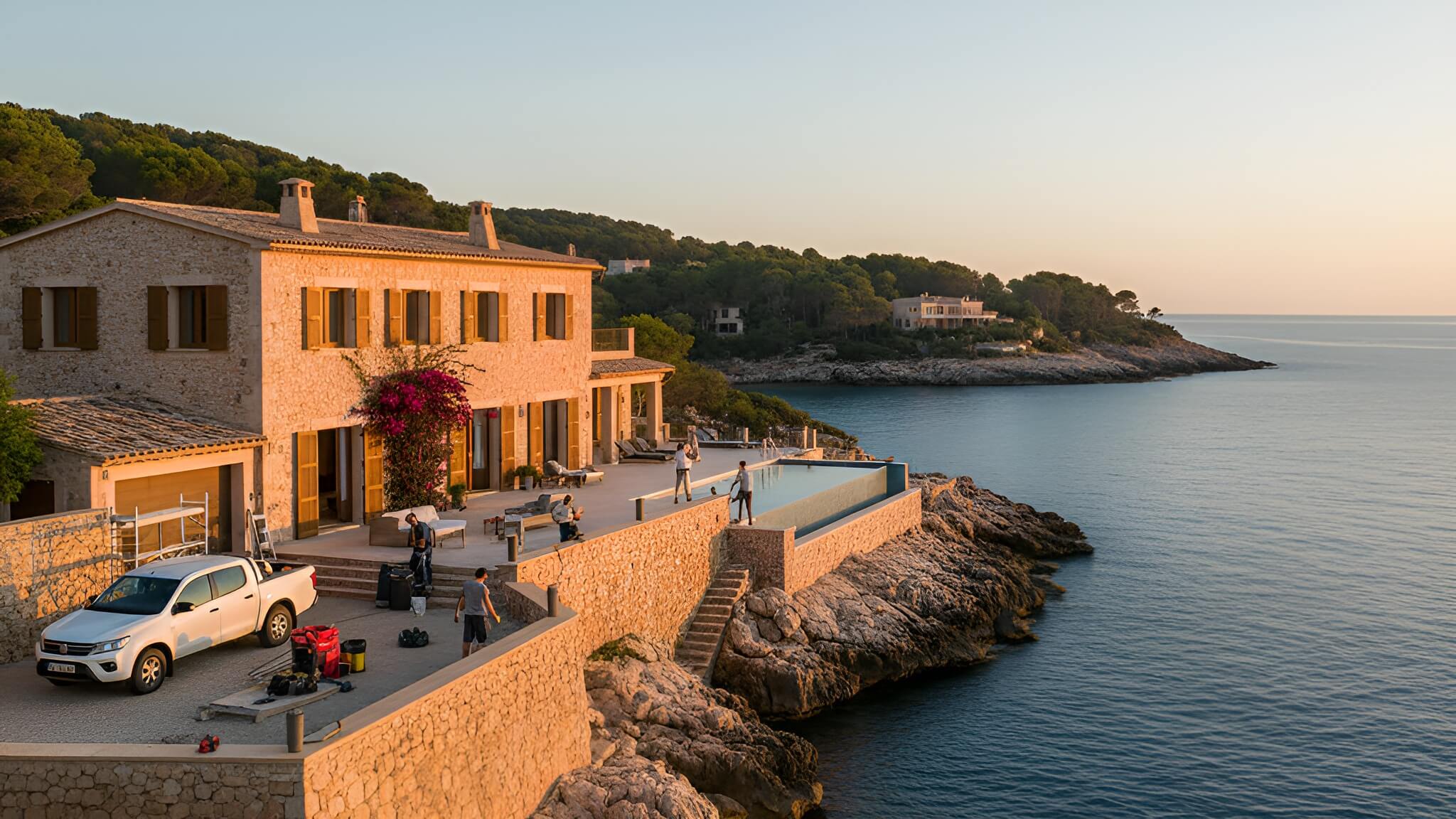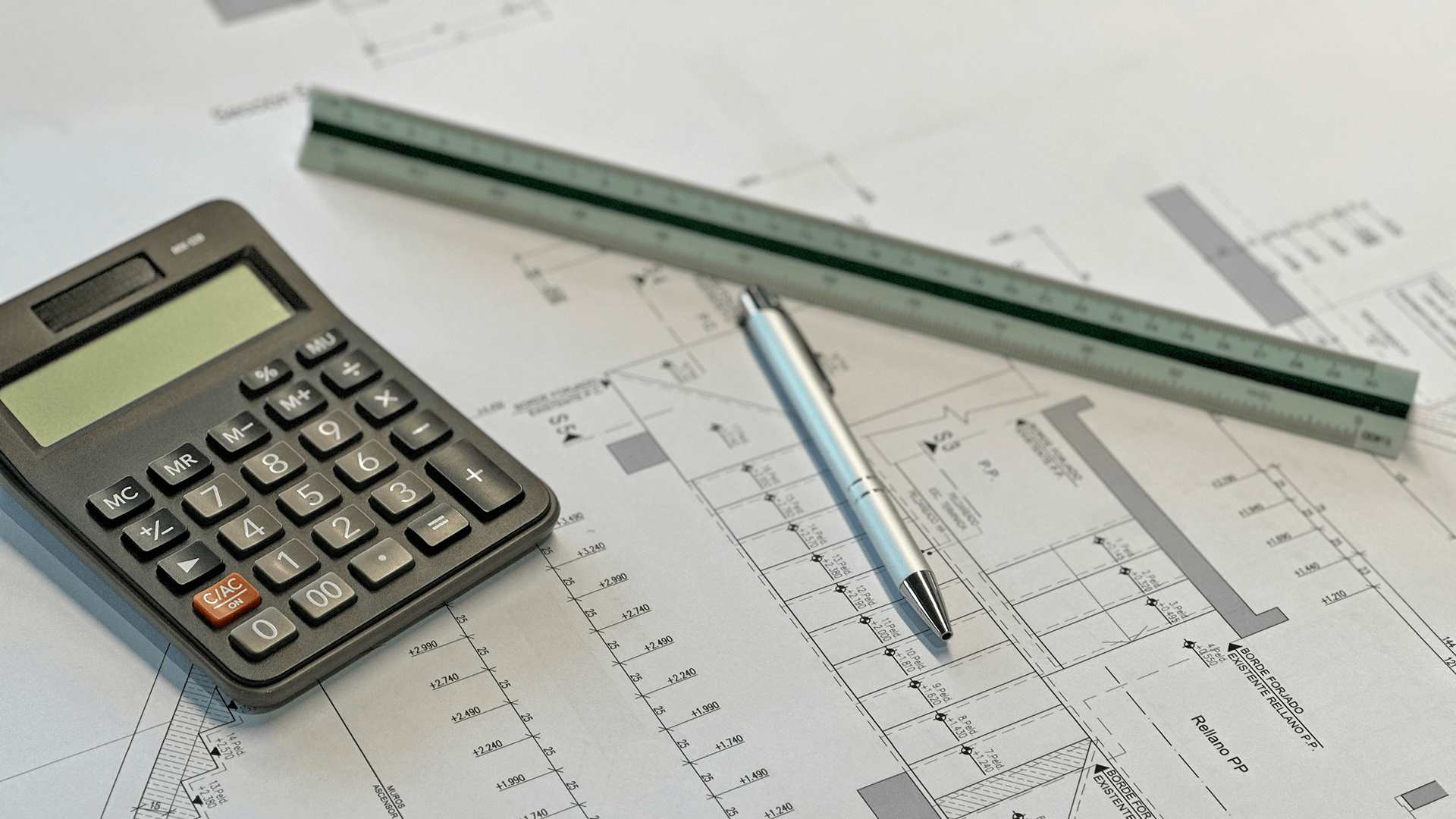

Tips for Maintaining a Seaside Home in Mallorca
A house by the sea is both a dream and a challenge: sea views, light, and climate are exceptional — yet saltwater, humidity, UV radiation, and wind subject the building envelope, materials, and technical systems to far greater stress than in less maritime environments. With proper preventive care, however, you can significantly enhance the value and lifespan of your coastal home. This article explains how to maintain and preserve your seaside property in Mallorca over the long term.
Why Coastal Homes Require Special Care
Homes near the coast are exposed to unique environmental conditions. Salt and sea mist accelerate corrosion of metal parts; wood and plaster can swell or develop mold due to high humidity; and strong UV radiation fades colors and damages sealants. Wind and storms strain structural components, while temperature fluctuations cause materials to expand and contract. The goal of maintenance is to detect, prevent, and professionally repair damage at an early stage—reducing repair costs and preserving long-term living comfort.
Core Principles of Coastal Maintenance
There are a few essential rules every coastal homeowner should follow:
- Regular inspection is key. Short, scheduled checks save far more money in the long run than emergency repairs
- Take corrosion protection seriously. Use components made of stainless steel 316, galvanized steel, or coated materials that can withstand salty air
- Design for easy maintenance. Installations should be easily accessible for cleaning and repair
- Use breathable construction methods. Especially in traditional stone houses, diffusion-open plasters allow moisture to escape
- Choose high-quality sealants and coatings. UV-resistant, elastic materials extend the lifespan of joints and façades
Detailed Measures by Building Element
Roof and Drainage
Roof tiles, underlays, and gutters are especially vulnerable to salt and wind. Replace loose tiles immediately and repair any cracks in waterproofing. Gutters and downpipes should be cleaned at least twice a year. Roof metal parts—hooks, brackets, and fasteners—should be made of stainless steel 316 or galvanized steel and checked regularly for rust.
Façade and Exterior Plaster
Salt deposits form white crusts that should be rinsed off with fresh water regularly. Cracks in plaster must be repaired promptly. For natural stone or lime façades, use breathable plasters. UV-resistant paints or hydrophobic coatings protect the surface without compromising breathability.
Windows, Doors, and Fittings
Saltwater attacks metal fittings. Stainless steel 316 fittings withstand these conditions best. Clean and maintain seals regularly; wooden frames should be protected with maintenance coatings. Mechanical parts like hinges and locks should be oiled annually.
Wood Surfaces
Decking and wooden façades expand and contract in coastal conditions. Treat outdoor wood with open-pore stains. Avoid prolonged exposure to standing water—ensure ventilation gaps and proper drainage. Indoors, choose wood types suited for high humidity.
Sealants and Joints
Sealants age faster under UV and salt exposure. Elastic, UV-resistant polyurethane or polysulfide sealants are recommended. Inspect joints annually and renew them completely if cracks appear.
Electrical Systems and Lightning Protection
Outdoor installations must be weatherproof and corrosion-resistant. Sockets and cabinets should meet at least IP66 protection standards. Test RCDs and circuit breakers once a year. Lightning protection systems should be regularly inspected.
Heating, Air Conditioning, and Ventilation
HVAC systems require regular maintenance. Check outdoor units for salt deposits and dirt; clean or replace interior filters every six months. Proper ventilation prevents mold growth.
Plumbing Systems
Pipes should be insulated to prevent condensation. Drain outdoor fixtures seasonally. Inspect seals and fittings for corrosion and replace if necessary.
Pool, Jacuzzi, and Outdoor Water Systems
Regular monitoring of water chemistry, filters, and pumps is essential. Pool covers protect against salt and debris. Electrical components must remain dry and corrosion-resistant.
Outdoor Areas and Garden
Gardens near the coast face specific challenges: saline soil and dry conditions. Choose salt-tolerant plants like lavender, oleander, rosemary, or olive trees—robust species that enhance the Mediterranean character of your garden. Use efficient irrigation systems such as drip or seepage systems, and collect rainwater in cisterns for sustainable watering. Keep terrace drains clear, and maintain joints between tiles or paving with elastic materials to prevent cracks and water buildup.
Mold, Moisture, and Indoor Climate
Good ventilation and air circulation are crucial. Mold often results from condensation or leaks. Address causes and dry affected surfaces. Keep furniture slightly away from walls to prevent moisture accumulation.
Conclusion
A house by the sea demands more attention than an inland home. However, with regular inspections, proper care, and professional repairs, you can avoid long-term damage and preserve your dream home’s value. Begin with monthly checks and annual professional servicing. Two measures are particularly important: regular rinsing of salt deposits and annual inspection of HVAC and electrical systems. This way, your Mallorca home remains a place of lasting comfort and well-being.

